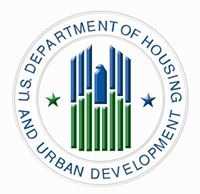EPA Secures Funding under the Bipartisan Infrastructure Law to Ensure the Clean Up at Raymark Superfund Site Continues Full Force
STRATFORD, CONN. – RealEstateRama – The U.S. Environmental Protection Agency’s (EPA) EPA Deputy Administrator Janet McCabe and EPA New England Regional Administrator David Cash joined Congresswoman DeLauro and Representatives from the U.S. Army Corps of Engineers, the Connecticut Department of Energy and Environmental Protection (CT DEEP), and the Town of Stratford to announce a $23 million commitment from the Biden-Harris Administration from the Bipartisan Infrastructure Law (BIL) to ensure the cleanup at the Raymark Industries, Inc. Superfund Site in Stratford, Conn.
“Today’s announcement is great news for citizens, property owners, and business owners in Stratford,” said EPA New England Regional Administrator David W. Cash. “This unprecedented amount of funding that’s coming from the Bipartisan Infrastructure Law will ensure that the Raymark cleanup continues full throttle. I want to thank our partners at the State and at the Army Corps, as well as the community of Stratford for engaging in the ongoing cleanup activities and helping to EPA to restore multiple properties so that they can be safely operated and productively used.”
The Raymark Industries, Inc. site is one of thousands of contaminated sites nationally that have been given Superfund status due to the nature and extent of hazardous wastes at the site, and the cost and logistics associated with cleaning them. Superfund sites can include former manufacturing facilities, industrial locations, processing plants, landfills and mining sites. The $23 million allocation for the Raymark Industries, Inc. Superfund Site is part of a $1 billion “first wave” of funding from $3.5 billion in the Bipartisan Infrastructure Law to help cleanup polluted Superfund sites in communities across the country.
The influx of BIL funding for Raymark will help EPA and the U.S. Army Corps of Engineers continue excavating Raymark properties, disposing of waste, and cap the ballfield in a faster, more efficient and coordinated manner. The additional BIL funding is allowing multiple concurrent activities such as excavating waste from largely commercial properties while concurrently constructing necessary stormwater management features such as a new conveyance line and pump station.
The historic Bipartisan Infrastructure Law is making a huge difference in EPA’s efforts to protect human health and the environment. Thanks to funding authorized in BIL, over the next five years EPA will be putting $60 billion into improving the health, equity, and resilience of communities in every corner of the country. Areas that BIL will make a dramatic difference include improving drinking water, wastewater, and stormwater infrastructure, removing lead services lines, and protecting communities from emerging contaminants like PFAS. BIL will invest a historic $5.4 billion to clean up legacy pollution at Superfund and brownfields sites, helping to restore the economic vitality of communities. Finally, BIL is helping U.S. communities to make a $5 billion investment in electric and low-emission school buses and healthier air for children.
“The polluted Raymark site has been an unfair, unwanted burden for Stratford residents. This latest federal funding is a giant step forward to complete restoration of that property, creating new economic vitality and job opportunity – both critical goals of President Biden’s infrastructure program,” said U.S. Senator Richard Blumenthal.
“This major funding from the Bipartisan Infrastructure Law will ensure the Raymark Superfund Site gets cleaned up once and for all. Transforming these contaminated sites into safe, productive places for new housing or local businesses will be an economic boon for Stratford, and I’m glad to see the EPA is invested in making sure this project is completed,” said U.S. Senator Chris Murphy.
“The Bipartisan Infrastructure Law continues to deliver in big ways for Connecticut and the United States,” said U.S. Congresswoman Rosa DeLauro. “This funding is vital in every sense. Here in Stratford, where we worked together to bring a community-minded remediation plan to fruition, it will mean the continued the cleanup of the Raymark superfund site. The Environmental Protection Agency and the Army Corps of Engineers have made great strides in the remediation of the contaminated soils across the community which I was excited to see for myself last summer. We will soon see the completion of these efforts – ensuring the safety of residential properties, bringing commercial properties back onto the tax rolls, and both redeveloping the ballfield and greatly improving the Town’s wastewater management system. The Bipartisan Infrastructure Law is not just about rebuilding roads and bridges. It is about creating safer, sustainable conditions for our comminutes by bettering our environment and creating and supporting good-paying jobs.”
“The infusion of additional federal funds to accelerate the remedy construction of the Raymark Superfund Site demonstrates EPA’s commitment to this critical project,” said Katie Dykes, Commissioner of the Connecticut Department of Energy & Environmental Protection. “DEEP is proud to continue the excellent working partnership with EPA, the Army Corps of Engineers, and the Town of Stratford to facilitate the cleanup of Raymark waste at various properties in Stratford. Once completed, the remedial work will provide an opportunity to redevelop the impacted properties, which will benefit Stratford and its residents.”
“I want to thank the dedicated bipartisan work of our federal and state legislative delegation as well as the EPA, CT DEEP, and the Army Corps of Engineers in our continued collaborative work in funding the removal and remediation of Raymark waste in the Town of Stratford, as we partner in a commitment to the health of local residents and restoration of critical properties with significant economic potential,” said Stratford Mayor Laura R. Hoydick. “The remediation of Raymark waste has been a long-standing effort involving many partners including town, state and federal agencies working in concert to address the groundwater and soil contamination at this superfund site. We have come a long way together in that process, and we still have much to do, and this announcement today cements our unified commitment to remediation.”
The 34-acre Stratford site, added to the National Priorities List (NPL) in 1995, was the location of the Raymark Industries, Inc., a manufacturer of automotive breaks, clutch parts, and other friction components. Raymark operated at this location from 1919 until 1989 when operations ceased, leaving behind highly-contaminated waste that consisted of polychlorinated biphenyls (PCBs), asbestos, lead, and copper. The Raymark manufacturing waste was historically disposed of as fill on the facility but, over time, this waste material was also disposed of within the Town of Stratford at a minimum of 46 residential properties and over two dozen other commercial, recreational and municipal properties. In addition, several wetland areas in close proximity to the Housatonic River were also filled in with Raymark’s manufacturing waste.
In 1980, the Comprehensive Environmental Response, Compensation and Liability Act, known as Superfund, was passed. The novel law gave EPA the authority and funds to hold polluters accountable for cleaning up the most contaminated sites across the country. When no viable responsible party is found or cannot afford the cleanup, funds appropriated by Congress are used. A tax on chemical and petroleum industries provided funds to the Superfund Trust fund for Superfund cleanups up until 1995. The Bipartisan Infrastructure Law reinstates the chemical excise taxes and invests an additional $3.5 billion in environmental remediation at Superfund sites, making it one of the largest investments in American history to address the legacy pollution that harms human health and the environment of communities and neighborhoods.
The Bipartisan Infrastructure Law is a once-in-a-generation investment that will create millions of jobs modernizing our infrastructure, turn the climate crisis into an opportunity, and put us on a path to win the economic competition for the 21st century.
Contact Information
Mikayla Rumph
(617) 918-1016













